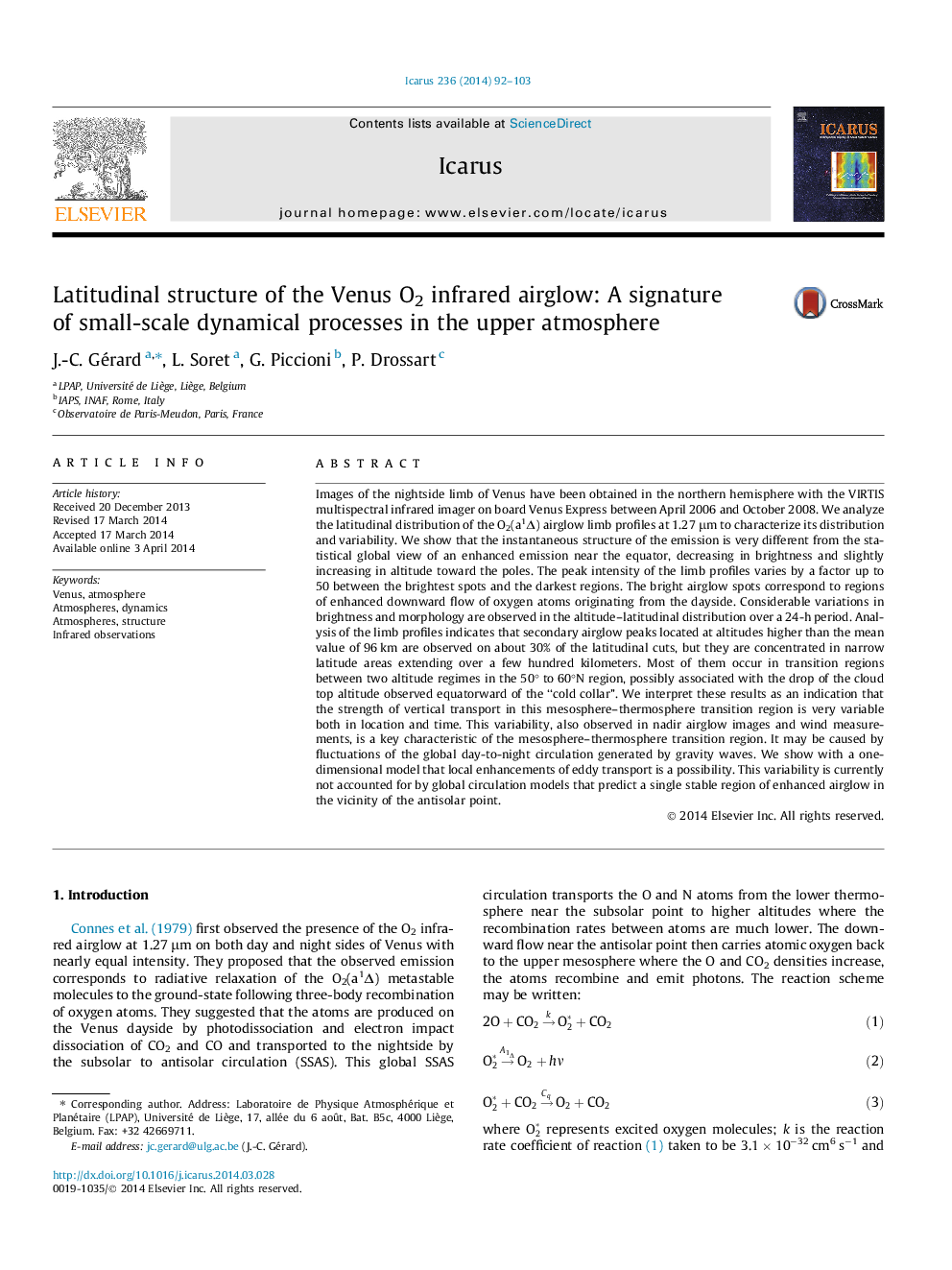| کد مقاله | کد نشریه | سال انتشار | مقاله انگلیسی | نسخه تمام متن |
|---|---|---|---|---|
| 1773170 | 1523554 | 2014 | 12 صفحه PDF | دانلود رایگان |

• The latitudinal distribution of the O2(a1Δ) Venus airglow is measured with VIRTIS-M.
• The limb profiles vary in intensity and altitude along latitudinal cuts.
• Significant structural changes are observed over 24-h periods.
• Secondary peaks occur in limited regions equatorward of the cold collar.
• Local enhancements of vertical transport possibly cause the observed structures.
Images of the nightside limb of Venus have been obtained in the northern hemisphere with the VIRTIS multispectral infrared imager on board Venus Express between April 2006 and October 2008. We analyze the latitudinal distribution of the O2(a1Δ) airglow limb profiles at 1.27 μm to characterize its distribution and variability. We show that the instantaneous structure of the emission is very different from the statistical global view of an enhanced emission near the equator, decreasing in brightness and slightly increasing in altitude toward the poles. The peak intensity of the limb profiles varies by a factor up to 50 between the brightest spots and the darkest regions. The bright airglow spots correspond to regions of enhanced downward flow of oxygen atoms originating from the dayside. Considerable variations in brightness and morphology are observed in the altitude–latitudinal distribution over a 24-h period. Analysis of the limb profiles indicates that secondary airglow peaks located at altitudes higher than the mean value of 96 km are observed on about 30% of the latitudinal cuts, but they are concentrated in narrow latitude areas extending over a few hundred kilometers. Most of them occur in transition regions between two altitude regimes in the 50° to 60°N region, possibly associated with the drop of the cloud top altitude observed equatorward of the “cold collar”. We interpret these results as an indication that the strength of vertical transport in this mesosphere–thermosphere transition region is very variable both in location and time. This variability, also observed in nadir airglow images and wind measurements, is a key characteristic of the mesosphere–thermosphere transition region. It may be caused by fluctuations of the global day-to-night circulation generated by gravity waves. We show with a one-dimensional model that local enhancements of eddy transport is a possibility. This variability is currently not accounted for by global circulation models that predict a single stable region of enhanced airglow in the vicinity of the antisolar point.
Journal: Icarus - Volume 236, 1 July 2014, Pages 92–103